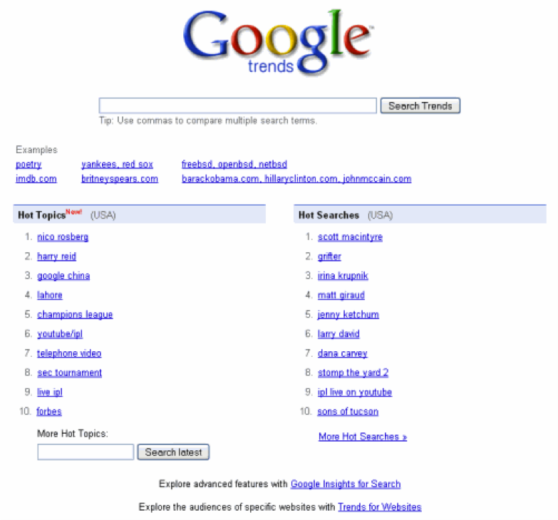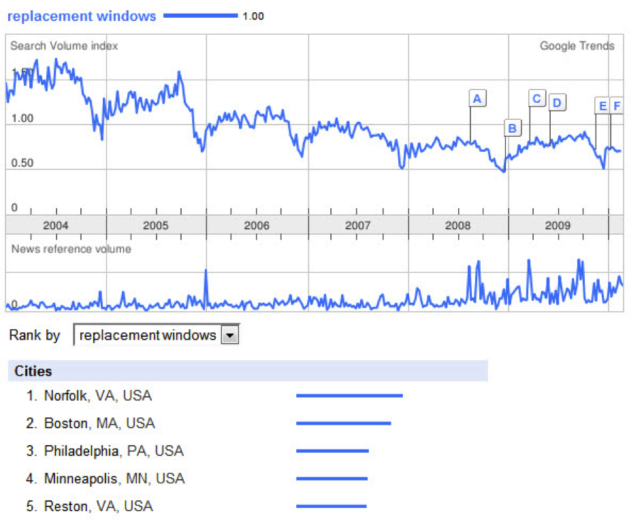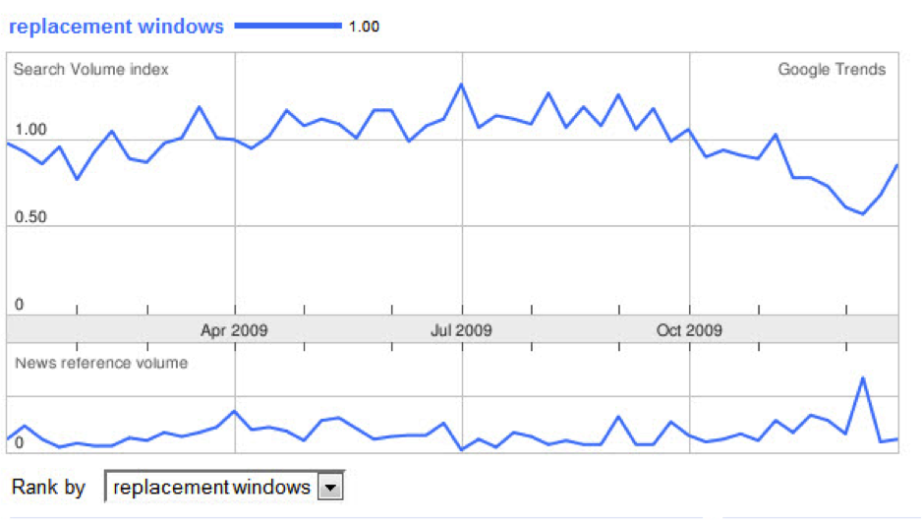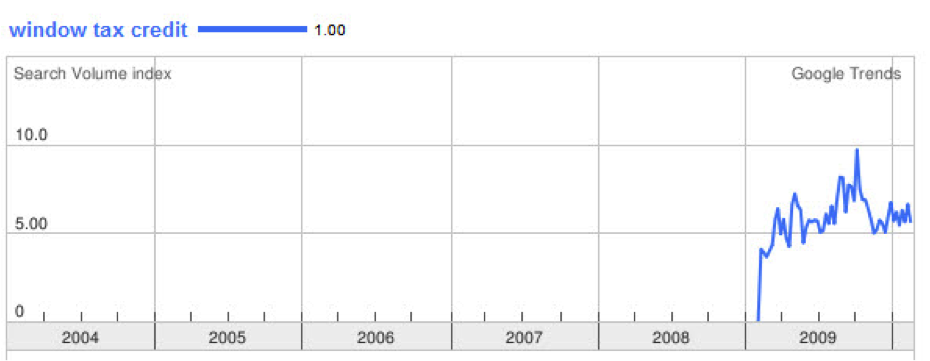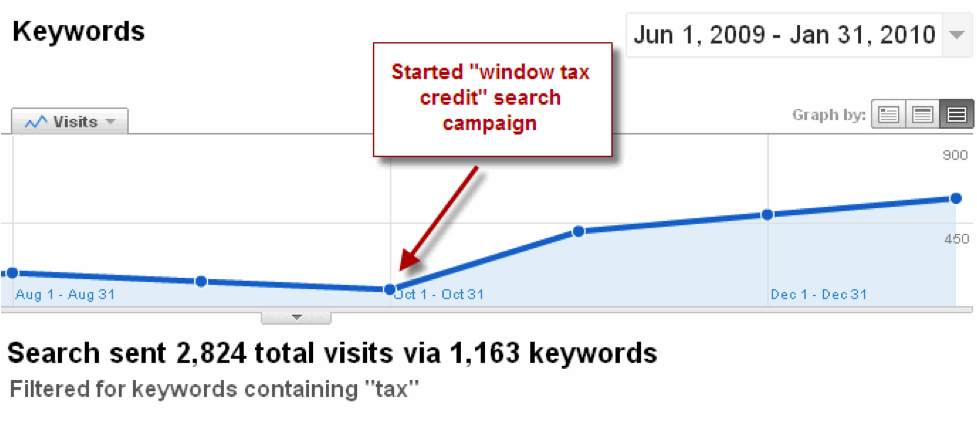Case Study: Using Google Trends to Discover New PPC Opportunities
Google provides marketers and site owners a range of great, free tools to perform keyword research. One tool that often flies under the radar of many PPC marketers is Google Trends. The value of a keyword research tool like Google Trends is that it allows you to “see what the world is searching for.”
More specifically, Google Trends lets you discover rising keyword search activity for a variety of different phrases and terms. This gives marketers and site owners the opportunity to monitor and capitalize on the momentum of keyword popularity as its happening. Within the Google Trends toolset, there are a few different keyword analysis features, which include:
- Hot Topics: get a snapshot of what people are saying, by aggregating the topics with the most buzz in the news and social media arena
- Hot Searches: see the fastest-rising searches across different timelines; get a list of the day’s Top 20 fastest-rising search queries or select a recent date in history to see which keywords were trending higher that day; you can also drill down by country and region
- Trends for Websites: see traffic data for a particular website over a specified time frame; get a list of similar sites that users visited and similar keywords that users searched for; compare the web metrics of two sites side-by-side
What’s more, all the keyword and query data in Google Trends is fresh and updated hourly (according to Google’s website). So what we have is a free, real-time keyword listening tool that users can leverage to collect a wealth of search trend data. Think of the benefits. By using Google Trends, you can identify hot, trending topics as they are gaining in popularity and use this intelligence to inform your PPC marketing campaigns.
Now, much of what I’m saying here is anecdotal or hypothetical in nature. To me, case studies and actual results are far more compelling. So in this article, I’m going to give a real world example of how I used Google Trends for a new client’s website to:
- Perform advanced keyword analysis
- Examine seasonal search patterns
- Discover a new, untapped keyword vertical
- Increase relevant traffic and sales
- And, in the process, save myself months of time and energy.
Using Google Trends to Predict Seasonal Traffic Patterns
Last year, I was hired by a client who sells replacement windows in Massachusetts. He wanted to launch a pay-per-click (PPC) campaign to drive traffic to his website because sales were lagging. Now, from previous experience, I know there are seasonal patterns in the construction industry in the Northeast. The majority of the building activity occurs between the spring and fall months because of weather conditions. However, I was unsure if the same seasonal patterns applied to sales of replacement windows, which would impact the PPC campaign strategy I was charting for my client. So I turned to Google Trends for answers.
So there are a few interesting points to note in the results from Google Trends.
- Down Trend: There’s an apparent downward trend for the search term “replacement windows,” which started in 2004 and appears to have bottomed or slowed at present time. I’m assuming this drop in search activity is the result of two factors: the recession and the housing downturn.
- Geo Targeting: Of the top search volume by city, the Boston area is the second most active query space, which is good news for my client and tells me that’s a geo modifier I should target “Boston replacement windows.”
- Seasonality: There’s a very distinct pattern that develops each year. Search activity begins to percolate in March, it peaks in the mid summer months, then wanes in November and December, as illustrated in this example.
This seasonal trending makes perfect sense and mirrors the warm/cold weather patterns in the Northeast. Installing replacement windows involves removing old windows and creating huge holes in your walls, and homeowners don’t want to do this when it freezing cold outside. It also tracks with the busy time in the construction industry.
However, my client told me he thought that his peak sales months are in October and November, which is when he wanted to aggressively target paid search. But the Google Trends search data says otherwise. It told me I should ramp up PPC marketing activity from March through November and then go full bore in the prime search activity months, which run from June through October.
Now, had I not been able to leverage Google Trends for keyword data, it would’ve taken me time managing my client’s paid search campaign to discover these patterns. Also, if I listened to my client, I would have cranked up PPC spend at precisely the wrong time and missed the peak months, which is precisely when his competitors were bidding aggressively for the top spots in the Google paid search results. But by researching keywords and search activity with Google Trends instead of relying on conjecture and guesswork, I was able to avoid missed traffic opportunities during those prime months of online activity.
Google Trends Reveals New Keyword Opportunities
The seasonality and geo targeting intelligence I gained from Google Trends was invaluable. But I also discovered a peculiar trend that intrigued me: despite a steady drop in search volume for “replacement windows,” the volume of news references was spiking. Why would that happen? Why would media mentions be on the rise for an industry on a downward trend? It didn’t make sense. So I rolled up my sleeves, did some digging and learned that the Federal Government had recently passed an energy efficiency tax credit for homeowners who installed replacement windows. Could this jump in news activity for “replacement windows” be a result of the tax credit? I re-factored my query to include “window tax credit” and found this.
Eureka! It appears that the tax credit from the Fed did in fact spur the spike in search activity for a lagging industry, as I’d theorized. This was a major find.
Now, without Google Trends, I may have never realized this was this keyword opportunity existed. I immediately created a new PPC ad campaign around a basket of “tax credits for replacement windows” keywords for my client so we could capitalize on this hot search momentum. Here are the initial results.
By discovering this opportunity and creating this ad campaign to target the trending search activity, I was able to provide an immediate traffic boost for my client’s site from consumers seeking information about the tax credit. Even better, we were able to convert many of those visits into sales. Finally, notice that despite the seasonal dip in search activity that occurs each winter, the traffic from the tax credit PPC campaign saw steady month over month growth as word spread about the tax credit. The result of all this was a very happy (and busy) customer due in large part to the keyword research and search trend data I collected using Google Trends.
About the Author
Ken Lyons is Senior Marketing Manager at WordStream, a provider of pay per click software and advanced PPC tools for researching, organizing and grouping large numbers of keywords for greater PPC campaign relevance and higher Quality Scores.



